Foxconn, which has always been called "the foundry", wants an IPO. As a result, a super "squid" ushered in the border of Industrial Internet IIoT.
It is worth noting that the full name of the application for IPO company: Foxconn Industrial Internet Co., Ltd., the name of the securities is "Industrial Fulian." From February 1st, 2018, to the prospectus, to the IPO application on March 8th, through the "Green Channel", and then to the IPO approval on May 11, "Foxconn, which is less than three years after its establishment," is just used. It took 100 days.
According to the schedule, the initial inquiry time for this is May 17-18, the deadline for the payment of strategic investors is May 18, and the online and offline subscription for the initial public offering is May 24. Based on this, we will welcome Foxconn to the market before and after Children's Day.
When it comes to Foxconn, the impression that people often give is very mysterious. She has a superior OEM manufacturing skill and is surrounded by negative rumors from time to time. Landing in the A-share market and transforming into a public company has undoubtedly become the best way for Foxconn to reveal its mystery and reveal its true face. The introduction of the concept of "Industrial Internet IIoT" in the prospectus highlights the ambition of Guo Taiming.
Foxconn's prospectus reads: "The company is the world's leading professional design and manufacturing service provider for communication network equipment, cloud service equipment, precision tools and industrial robots, providing customers with intelligent manufacturing services for new forms of electronic equipment products with the core of the industrial Internet platform. The company is committed to providing enterprises with comprehensive solutions of technology services based on automation, network, platform and big data, leading the transformation of traditional manufacturing to intelligent manufacturing; and building cloud computing, mobile terminals and internet of things based on this. Big data, artificial intelligence, high-speed networks and robots are the new ecosystem of 'advanced manufacturing + industrial Internet' for technology platforms."
It is not difficult to find that Foxconn has “redefined†its own positioning. Her understanding of herself has been separated from the pure foundry and manufacturer status of “the momentâ€, but she has been sublimated to a comprehensive plan of “facing the futureâ€. The height of the provider, the service provided can be imagined, is the industrial Internet solution.
From various foreign words of Guo Taiming, Foxconn’s perception of the Industrial Internet can be seen. He said: “The Internet economy is rapidly integrating with the real economy, which brings huge opportunities to the manufacturing industry. Foxconn will become a 'six currents in the future. 'Company, these six streams include virtual end of information flow, financial flow, technology flow; physical flow of personnel, process flow and logistics, three virtual three real, online and offline."
Guo Taiming believes that the industrial Internet is an important direction for Foxconn's transformation in the past five years. Foxconn's landing in A shares will inject more Internet of Things genes and accelerate its development in new areas such as intelligent manufacturing, industrial 4.0 robot production, and artificial intelligence big data. At the same time, through the Foxconn Industrial Internet Cloud Platform, the manufacturing capacity of SMEs will be improved and 30 million SMEs will be empowered.
In the prospectus, Foxconn mentioned that GE General Electric is one of its main competitors. Under a closer look, this typical representative of the Sino-US Industrial Internet has many similarities: they are the core players of the Industrial Internet Circuit. They all started to build an industrial Internet platform from their own needs, and they did not hesitate to try to stand firm in the big game of IIoT.
Since Foxconn binds its future to the industrial Internet, it may be worthwhile to compare it with GE. It may provide some reference and reference for us to take the road of the future of IIoT.
Let us first look at how much Foxconn's volume is.
In the field of intelligent manufacturing of electronic devices, according to the IDC database statistics:
â— In 2016, the global server and storage device manufacturing market output value was approximately 35.3 billion US dollars, and Foxconn Industrial Internet Corporation's turnover accounted for more than 40% of the global total output value;
â— In 2016, the global network equipment manufacturing market output value was approximately 27.9 billion US dollars, and Foxconn's turnover accounted for more than 30% of global production value;
â— In 2016, the global telecom equipment manufacturing market output value was approximately $12.2 billion, and Foxconn's turnover accounted for more than 20% of global production.
According to the prospectus, Foxconn's operating income in the past three years, 2017, 2016, and 2015 were 354.544 billion yuan, 272.713 billion yuan, and 272.799 billion yuan respectively. The net profit attributable to shareholders of the parent company was 15.867 billion yuan and 14.366 billion yuan respectively. , 14.35 billion yuan.
According to the 2017 net profit calculation, among the 3,509 listed companies in A shares, Foxconn can rank 32nd and A-share companies with net profit exceeding 99%.
Foxconn's initial fundraising of 27.25 billion yuan has created the largest IPO of A shares in the past three years and is the 11th largest IPO in the history of A shares.
So where will the money raised be used?
According to the prospectus, Foxconn’s total fundraising amount of more than 27 billion yuan was mainly invested in the following eight major projects:
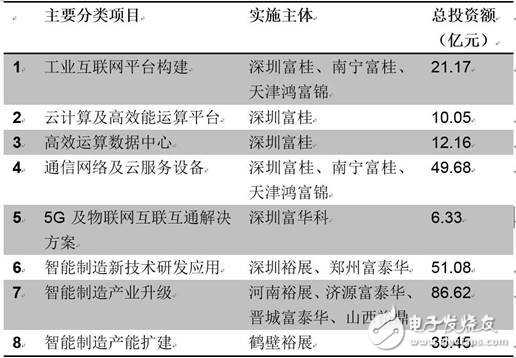
The “Industrial Internet Platform Construction†is listed as the first in the prospectus, and the relevant inputs are as follows:

Although the banner of "Industrial Internet" is held high, the IIoT platform project for future layout is ranked first. However, from the perspective of Foxconn's practical operation, the IIoT layout has not received much resources for this fundraising. The amount only accounts for 7.77% of the total fundraising. More investment flows are still upgrading, research and development and expansion of smart manufacturing lines related to high-end mobile phone precision machine components, accounting for 63.53%.
Although there are discrepancies between the arguments and practices, the initial stage and follow-up actions may be reasonably speculated. Foxconn after the IPO will undoubtedly rank among the leaders of the domestic IIoT platform, and compatible with various businesses, and GE. The status of the industrial Internet community in the United States is quite equal.
After measuring the "family" of Foxconn, let's take a look at GE at the same track.
There was no industrial Internet platform in the world, and IIoT was the new direction that former chairman Immelt found for GE. He has a famous saying: "GE was a manufacturing company yesterday and woke up to be a software and data company."
The idea that GE first produced the "Industrial Internet" was during the financial crisis around 2009. As the uncertainty of economic growth increased, GE's industrial customers began to shift more attention from increasing productivity to increasing profit margins.
Of course, the Industrial Internet is also a consideration of GE's own needs, and the aviation engine business needs the IIoT platform.
In the aircraft engines that GE produced in the past, the sensors installed were passive and only illuminate red when a fault occurs. This kind of passive data analysis after the fact, in addition to accumulating experience, has not much value. Only by providing real-time data analysis can the efficiency be greatly improved. Therefore, GE requires that each engine retain all data for each flight and pass the data back to the data center for analysis during the flight.
At this time, Predix was nothing more than GE's application software for the engines it sold. One of the applications was to provide predictive maintenance to jet engines and reduce downtime.
In 2012, GE made a report on "Industrial Internet: Breaking the Limits of Wisdom and Machines", arguing that 1% efficiency improvement in various industries can bring significant economic benefits:
â— A 15 year cycle, the energy industry's savings of 1% of fuel means savings of $66 billion;
â— The aviation industry will save more than $30 billion in fuel savings by 1%;
â— If the medical industry improves efficiency by 1%, it will help the global medical industry save $63 billion.
â— According to GE statistics, the annual economic output of the industrial Internet sector is as high as $1 trillion.
At this time, GE has not made up its mind to build Predix into an industrial Internet platform.
Until 2014, some employees who switched from Microsoft to GE thought, "If GE wants to get the most value from IIoT, it has to build an industrial Internet platform like Microsoft's Windows operating system." After a brief symbolic thinking, Immelt quickly accepted the idea of ​​the IIoT platform, and the launch of the nest finally made GE a protagonist of the IIoT gamble.
People always love to deceive themselves because it is easier than deceiving others. The landing form of the industrial Internet is whether it is a customized software or a platform-based operating system. In the face of the multiple-choice questions that Immelt could not answer, he chose the latter.
In March 2016, Immelt explicitly referred to GE as a “digital industrial company†and made IIoT the most far-reaching transformation.
As a completely open system, Predix is ​​not limited to GE's own aerospace engines and applications, but to all industrial companies, they can use Predix to develop and share a variety of professional applications.
Since then, the IIoT platform has been pushed to the historical stage, and it has caused a follow-up craze in China thousands of miles away. In 2017, Immelt’s “study†did not stop the evolution of IIoT, but it became more and more fierce.
In 2017, Foxconn followed the footsteps of a large number of industrial Internet operating systems, and also developed its own IIoT platform BEACON, exploring the combination of digital technology and its 3C equipment, parts, channels and other professional advantages to transform into the industry-leading industrial Internet company.
Similar to GE, Foxconn first used the BEACON platform for its own capabilities, and achieved the ability to improve the production process, wireless smart positioning, SMT data overall presentation, intelligent energy management and adaptive testing.
However, implementing the IIoT platform for its own use and implementing the IIoT platform for the 3C electronics manufacturing industry are two completely different things. Implementing the IIoT platform for the 3C electronics manufacturing industry and the IIoT platform for other vertical industries are two completely different things.
According to Accenture's report, the global industrial Internet investment will exceed 500 billion US dollars in 2020; IDC statistics show that China's industrial Internet market will grow to 91.9 billion US dollars in 2017, and is expected to achieve US$127.5 billion in 2020. It is about 14.7%.
How hot is the domestic industrial Internet? Analysis of the data of a province in Zhejiang can give a glimpse of the whole leopard. Zhejiang has set up 30 industry-leading featured industrial Internet platforms, developed and integrated 100,000 industrial APPs, connected 200 million industrial equipments, and 300,000 platform enterprises as the development goals of 2025. According to estimates by Orient Securities, the entire China may create an industrial Internet market space of nearly 300 billion yuan per year.
With GE and Foxconn's volume, it is natural to fully deploy the industrial Internet platform, from cloud to edge, from device management to predictive maintenance, from machine learning to artificial intelligence. They actively embrace new technologies and applications. Picky eaters.
Taking AI as an example, GE actively integrated it into Predix. In the third quarter of 2016, PredixAnalyTIcs RunTIme introduced machine learning capabilities. Models for machine learning must be trained offline, and models after training can participate in the analysis as input and produce valuable relevant predictions. In addition, GE added artificial intelligence predictive analytics to the Apache Spark AI engine to improve service time.
Foxconn’s approach is even more radical. Guo Taiming stressed: “In the next five years, it will invest NT$10 billion (about US$340 million) to recruit relevant talents for AI applications and deploy artificial intelligence applications at all production sites.â€
Foxconn also cooperated with former Baidu chief scientist Wu Enda, hoping to use Wu Enda's new company, Landing.ai, to inject new energy into Foxconn, trying to transform manufacturing through artificial intelligence. Judging from the demo displayed on the outside, artificial intelligence is applied to typical scenes such as machine vision recognition product defects and improved industrial robot operation, and there is no imagination.
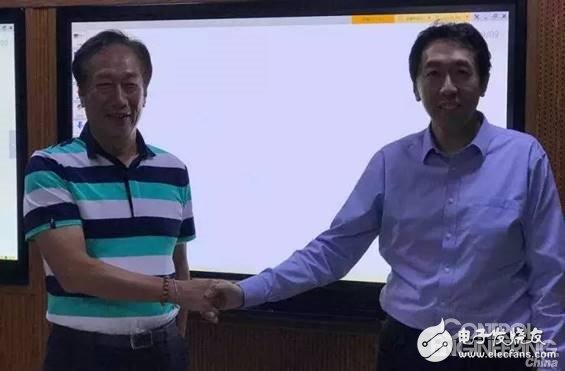
I have always held the view that artificial intelligence can only be a "small supporting role" in the industrial field, and the industry pursues certainty, so most of the scenes are not suitable for artificial intelligence.
The previous metaphor is still borrowed here to illustrate the nature of manufacturing data analysis.
Take stocks as an example. There are two modes, one is the Buffett model, which reads a lot of corporate and industry information, and makes investment decisions through complex reasoning, which is the model of “fuzzy information + complex reasoningâ€; the other is Chen Shui-bian’s Mrs. Wu Shuzhen's model, grasping the internal confirmation message from the chairman of the listed company, and making investment decisions through simple reasoning, that is, the "accurate information + simple reasoning" model.
Which model is closer to the essence of manufacturing? If there is only one truth, then I am sure: the second.
In last week's article, I once analyzed that “industrial big data†is a very special kind of industrial big data. In fact, it is not “big†and does not meet the standard of big data in the usual sense.
As a manufacturing cluster enterprise, Foxconn has a number of manufacturing plants, and it is only natural that hundreds of millions of "big data" are generated every day. However, if it is inferred that every enterprise in the 3C electronics manufacturing industry has the analytical needs of industrial big data, it is somewhat arbitrary.
In short, the core background of big data and artificial intelligence is due to the large uncertainty caused by multi-dimensional and multi-variables. Simple causality cannot refine the inherent logic of industry, only through the mode of “fuzzy information + complex reasoningâ€. Extracting correlations from enough large amounts of data is the foundation of data-intensive science. However, in most manufacturing scenarios, this foundation is not available, but it is still deterministic.
Foxconn is so arrogant that AI is used in manufacturing investment, and the practice of “being a leader and desperate†is really a sweat.
In the era of the industry, "the enterprise is on the cloud", there is quite a similar situation in the "shared bicycles" that year, and each company has its own consideration and layout for the prospect of "IIoT cloud platform".
Although the industrial Internet cloud platform seems to be a must-have for all manufacturing companies, it is in full swing, but the environment and conditions of different enterprises are very different, and the development stage and actual pain points are also different, leading to success among enterprises. Experience and patterns are difficult to replicate quickly. In addition to the consideration of individual data security and privacy, the current IIoT platform still promotes the deployment of IIoT in a project-based customization manner, and does not form a general-purpose capability platform that integrates most mainstream applications.
As Immelt's 16-year-old career, GE's investment in digitalization has never been soft. In 2016 alone, GE's digital R&D investment exceeded the budget by $700 million to $2.1 billion.
In addition to the annual fixed investment, GE also has targeted investment in industrial Internet platform-related start-ups, costing nearly $2 billion for centralized deployment.

In addition to planning to use 2.17 billion yuan in IPO fundraising for the construction of the industrial Internet platform, Foxconn is also an expert in venture capital. In 2016, Foxconn spent US$600 million to acquire Softbank's Asian Technology Investment Fund and actively sought out startup technology companies.
On the Foxconn investment list, it is full of unicorn startups, including India's chat application Hike, China's largest car company Didi Chuan, self-timer app and self-timer phone maker Mito, 360-degree camera manufacturer Lytro, China's popular bicycles The rental company Mobike and Vision Technology (Face++).
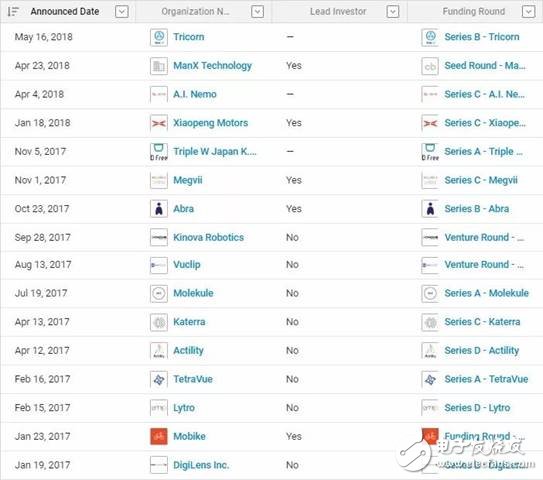
However, from the perspective of existing investments, Foxconn has not concentrated on the relevant investments in the industrial Internet.
At the same time, the founder of Softbank, Sun Zhengyi and Mr. Trump, also revealed the development plan of Foxconn in the United States. He presented a joint investment “commitmentâ€: Softbank and Foxconn promised to invest $57 billion in the US in the next four years to create 100,000 jobs. Among them, Foxconn invested 7 billion US dollars.
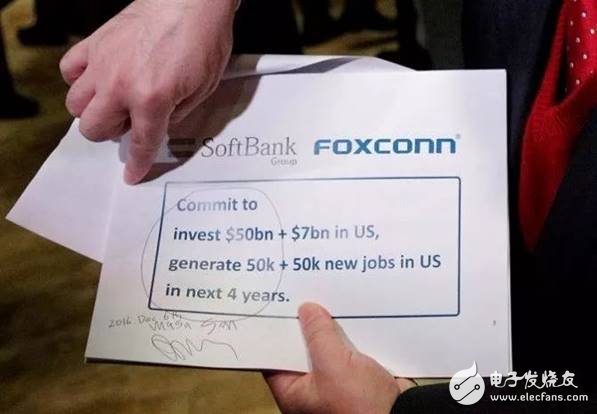
As for the final end of GE Predix, you and I know it.
GE lost $6.2 billion in 2017, and its stock price is back. Immelt, who is on the industrial Internet, is retiring. At the end of 2017, the new CEO announced at the Boston headquarters that it will begin to significantly reduce management costs and limit the size of the original plan.
First, GE sold its industrial solution in September 2017. The pick-up is ABB. The Swiss industrial giant ABB announced the acquisition of GE's global industrial solutions business for $2.6 billion, primarily for medium and low voltage power system manufacturing and installation components, with revenues of $2.7 billion in 2016.
Subsequently, GE announced that it will streamline more than $20 billion in 1-2 years, and the three major areas of healthcare, power and aviation are at the heart of the company and are actively looking for mergers and acquisitions for Predix.
According to GE's 4Q14 results announced at the beginning of the year, after significant cost reductions, GEDigital's business began to stabilize, and Predix and related orders increased by 41%. A year-on-year sales increase of $1.4 billion was achieved, with a growth rate of 100%.

Recalling that in 2015, Immelt has announced an ambitious announcement that “software and related services will exceed $15 billion in sales and make GE one of the top 10 software companies in the world†as one of the strategic goals for 2020. Now the performance of Predix makes this goal so missionimpossible.
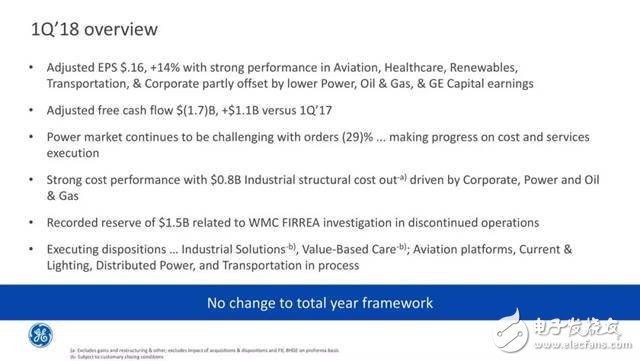
Foxconn obviously does not expect the industrial Internet platform BEACON to repeat the mistakes of Predix.
At present, there are more and more enterprises claiming to be “platform-type ecologyâ€. The real platform-based enterprises are supposed to have high barriers and deep moats, which can trigger the “cross-border subsidy†effect on the growth platform. The most typical ones, such as Siemens, from sensors, motors, controllers, industrial software, and the entire layout of the IIoT cloud platform, even if the IIoT cloud platform is low-margin or even subsidized, it can still earn a lot from high-margin products.
Let’s take a look at Foxconn’s moat. Guo Taiming once said: “From 20 years ago, Foxconn was not just a foundry. We have been changing from OEM to ODM to IDM. Our mechanical technology is very sophisticated. Our artificial intelligence started very early. Foxconn will become a platform in the future, from the initial 2B upstream supply chain integration, to what 2C customers want us to create, what users want to design for him."
Whether it is industrial Internet platform, smart phone precision manufacturing, industrial robot production, merger and acquisition of Sharp into the panel industry chain, the development of "Fulian network" self-operated e-commerce, Foxconn has a layout, but the platform is not yet thick, not forming a solid ring A ring-shaped commercial chain.
From the perspective of revenue composition, mobile phone-based communication network equipment is still the main source of revenue for Foxconn, more than 60%. However, the development of smartphones has entered a period of saturation. As can be seen from the IDC data, the production of mobile phones in 2017 is basically no increase compared with 2016.
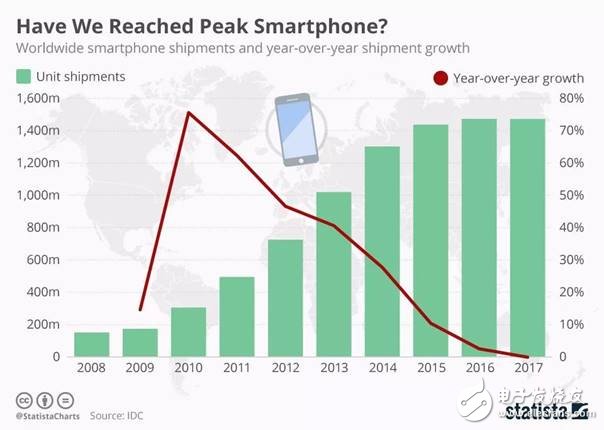
Although the 5G era is coming out, the expected output of other IoT hardware is far from that of smartphones, and it is difficult to meet Foxconn's huge production appetite.
Of course, it is not easy to underestimate the development of industrial robots. The Chinese market has become the world's number one industrial robot application market for five consecutive years. In 2016, the sales volume of industrial robots in the Chinese market was approximately 87,000 units, an increase of approximately 27% year-on-year. The sales of industrial robots in the Chinese market in 2010~2016 was as high as 32%.

Foxconn's sales of industrial robots, even if only accounted for 0.27%, have close to 1 billion in revenue. In this field, Foxconn is based on the 3C electronics manufacturing industry, which has the strongest demand for industrial robots. On the one hand, it has to face the regular competition of the “four big families†of international industrial robots, on the other hand, it has to cope with the strong offensive of domestic independent brands. .
Foxconn's "Million Robot Project" once shocked the world, but from the objective data, from 2015 to 2017, Foxconn industrial robot production was 0.78 million, 0.43 million and 0.39 million respectively. The production in 2017 is higher than that in 2015. Drop by 50%. At the same time, the capacity utilization rate of robots has also declined year by year, from 0.61% to 0.37% and 0.35% from 2015 to 2017.
Vanke, the founder of Vanke, often said: "The lack of money is not a bad thing for the company. Because the funds are limited, you are not allowed to invest blindly. You are not allowed to make big mistakes. If your strategic goals are not clear and you have no control, the money will be more. Disasters, such examples are innumerable. So I often say to those companies that are worried about lack of money, congratulations! You can't make big mistakes."
Now that the market is on the market, in the face of Foxconn, who is not bad money, do we have to send a "congratulations"?
Benefits of Privacy Screen Protectors
As a personal item, a mobile phone will always contain all kinds of private information and secrets. Therefore, when many people use their mobile phones in public places, they are worried that their screen content will be seen by the people next to them. Especially when you use your mobile phone to enter various passwords, it is very dangerous if you are targeted by malicious people.
In order to prevent private information and confidential documents from being peeped, Privacy Screen Protector came into being. As the name suggests, it is a Mobile Phone Screen Protector, which can prevent others from prying on the screen and protect personal privacy. When you install a Privacy Screen Protector on your phone, people around you won't be able to see what's on your screen.
The Anti-Spy Screen Protector uses patented ultra-fine louver optical technology, so that the information on the screen is displayed on the front for the user to read. The viewable area is 60 degrees. Anyone can only see the dark picture on both sides. And the anti-blue light effect of the Privacy Screen Protective Film, the blue light blocking rate is about 10%-30%, and the mobile phone with the Privacy Film will automatically darken to reduce some glare. Therefore, normal use will not hurt the eyes, but will play a protective role. Anti-peeping Screen Protector effectively protect business secrets and personal privacy. Whether it is work, study, communication or entertainment, it makes the use of computers and mobile phones more free. Help the company's senior business personnel, lawyers, consultants, financial personnel, etc. to avoid screen information leakage when using mobile phones.
Anti-Peep Hydrogel Screen Protector,Anti-Spy Tpu Hydrogel Film,Privacy Hydrogel Protector,Privacy Screen Protector Sheet
Shenzhen TUOLI Electronic Technology Co., Ltd. , https://www.hydrogelprotector.com